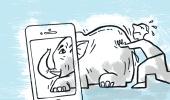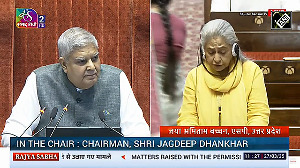'The list of things to be done or added or removed will keep growing and it will be a while before the emerging models settle down into lasting structures,' predicts Umesh Shrikhande, CEO, Taproot Dentsu.

A strategic inflection point is upon us. Legacy structures aren't working. New capability creation is critical.
Storytelling needs a makeover; while television commercials are not irrelevant, the digital footprint is growing rapidly and demanding that we think new, fresh and radical.
Profits are at an all time low, fundamentals are at stake.
For agencies, the rapidly evolving business could either reveal new opportunities or open the door to a downward spiral. What must ad agencies do and how must they change is a question that occupies most in the business today.
The good news is that new agencies have begun exploring models that are lean, agile, capable, responsive and hopefully more profitable.
What has emerged are a bunch of compact, integrated structures framed by an expanding web of collaborative relationships. One also hears of a new agency that is built on the lines of a private equity fund focused on start-up companies. All these are exciting developments.
Legacy agencies have also begun integrating acquired digital and CRM agencies with their main agencies. Clearly, all these developments hinge on the objective of exploring new-age models of working to deliver superior counsel and value.
The tectonic shifts and real threats notwithstanding, the centrality of ideas in value-creation hasn't diminished. In fact more than ever before, clients are seeking ideas that will help them grow in a VUCA (volatility, uncertainty, complexity and ambiguity) world.
So what must inform the new age agency business model?
Diversity of talent: The 'Hollywood model' seems to be the way to go. A strong core team with capabilities like strategic planning (including data and digital), ideation and creativity, business development and production co-ordination complemented by special purpose teams.
There may be an advisory board of subject matter experts and production services can be outsourced. Such models are highly adaptable, allowing us to reassess investment decisions more often.
High engagement means motivation is strong and skills are evident allowing agencies to command a premium. However it needs high levels of collaborative and negotiation skills, enabling cultures, fluid structures and innovative training and development plans.
Non-standard deliveries: The output is going to get increasingly non-standard, forcing agencies to look beyond tried and tested ways of delivering what clients want. An integrated agency's mandate will be to create strategic-communication interventions anywhere on the value-chain.
Building leaders: For the longest time, this industry has operated on the belief that leaders create themselves. The year 2018, more than ever before, has highlighted the fact that we couldn't have been more wrong.
There is a serious paucity of talent and it is time to tap new sources. Art schools, business schools and competing organisations need not be the only focus.
We need to go wider and find, create, nurture and groom leaders with a superior state of new-age-readiness across creative, strategy and business.
The profit imperative: Agency remuneration needs a review. Generating good quality ideas and having the tenacity to produce them well, is a tough business.
Technology may have made it more efficient, but it can never make it easy. The fee system (arguably brought in as a fairer way of remuneration over the commission system) has in many cases, degenerated into a cost-saving measure.
A tighter model with senior level engagement and sharper accountabilities will help reduce costs while making a stronger case for higher remuneration.
However, we do need to move towards a fairer model, well-aligned with the eclectic talent and capabilities being sought, so that agencies could keep investing in new capabilities with an R&D mindset that the new age demands.
Transmedia brand engagement: It is an exciting world today with a zillion possibilities (including but also beyond traditional media) of conversations, messaging and transactions done through a careful seeding or sharing or gaming and what have you.
Layer this further with fascinating data discoveries made through the AI lens, and there is a rich territory to play in. Moreover, as the human condition evolves, storytelling gets richer too.
In the days and years to come, navigating this staggering array of touchpoints for creating a clear role for the brand in the lives of people will be a huge challenge. Optimising budgets while finding the conversation plus media sweet spot will not be easy.
For new models to work therefore, we will need new talent structures led by classical brand champions and strategic planners for uncovering basic consumer motivations as well as writers, art directors, UX designers, data scientists, customer experience specialists, business strategists who know how to monetise and extract growth from personalisation and media-channel planners to help optimise the touchpoints.
Over the past few years and months, some moves towards a new model have been set into motion. But these are early days still and it will take some time for new models to settle down and hum like well-oiled machines.
The list of things to be done or added or removed will keep growing and it will be a while before the emerging models settle down into lasting structures.
Meanwhile it will hold us in good stead to reflect on some of the imperatives that have emerged, as businesses and the way we do business keeps changing.












 © 2025
© 2025